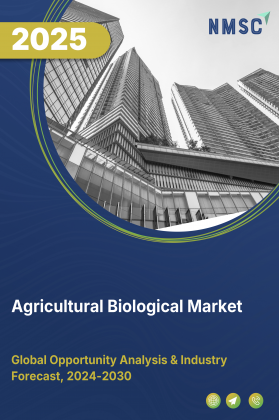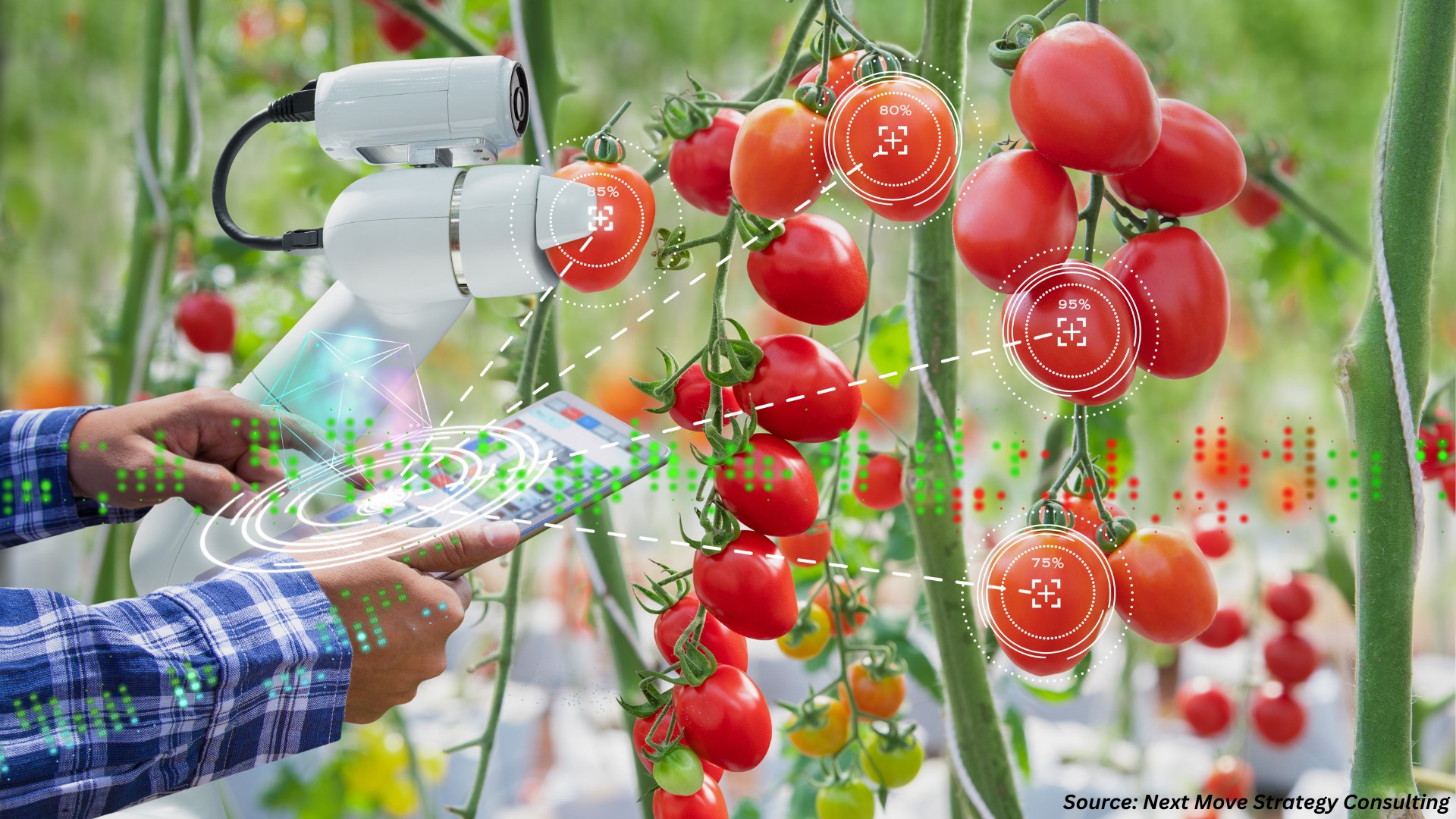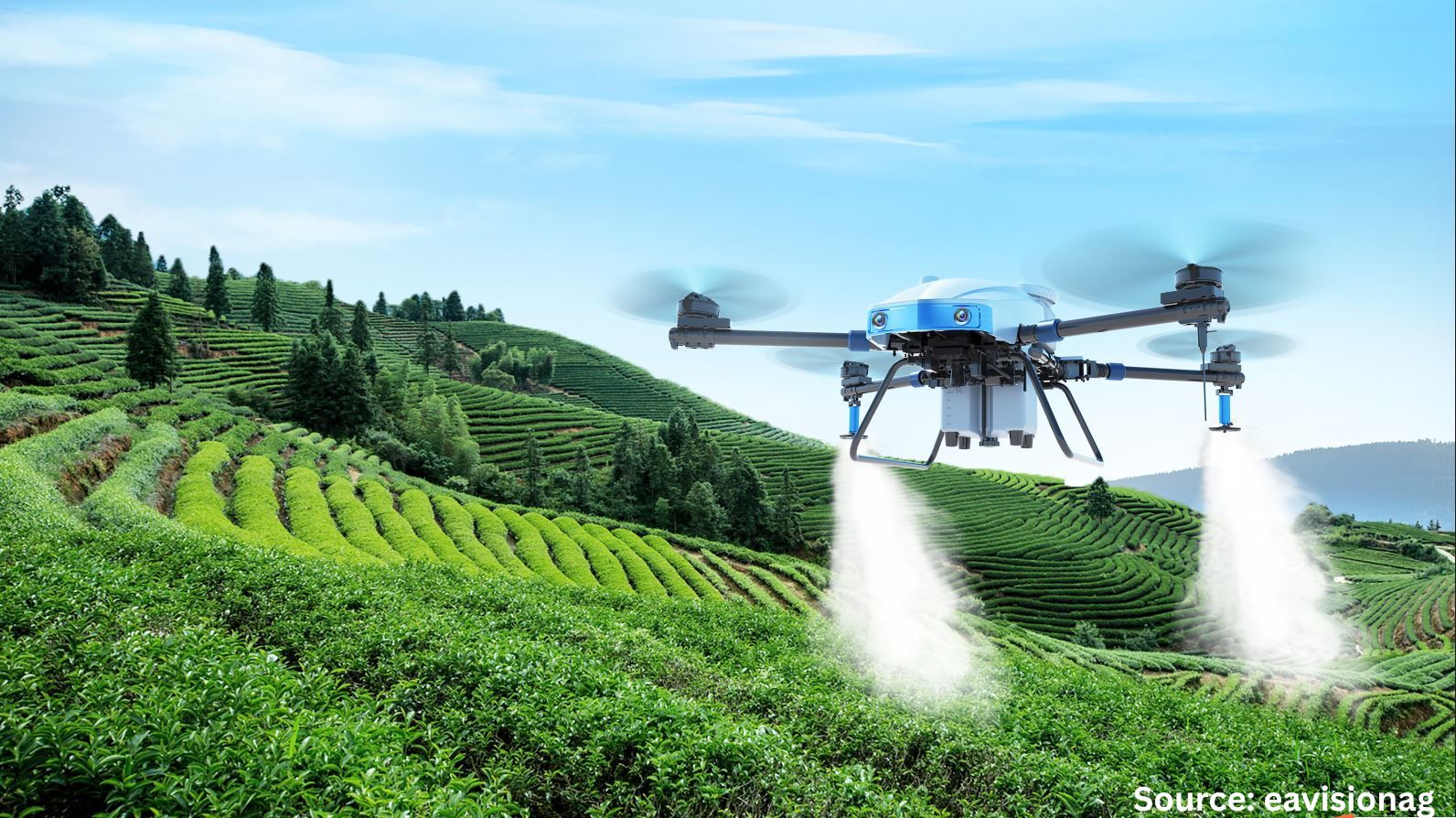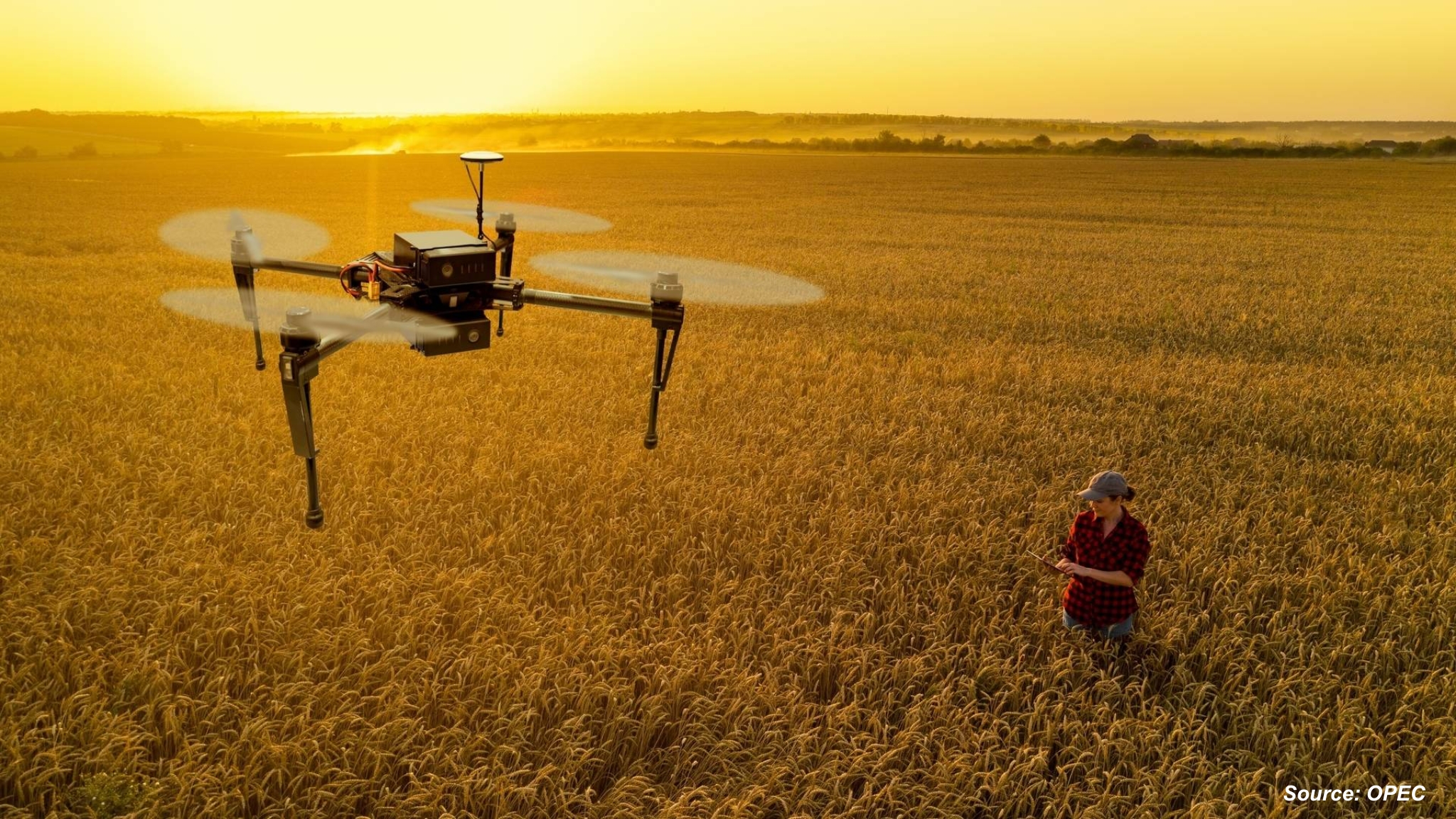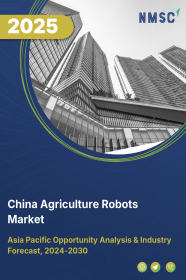
China Agriculture Robots Market by Type, (Unmanned Aerial Vehicles (uavs), Milking Robots, Driverless Tractors, Automated Harvest Robots, Others), by Farming Type, (Indoor Farming, Outdoor Farming, Indoor & Outdoor), by Application, (Aerial Monitoring And Scouting, Dairy & Livestock Automation, Field Operations, Harvest Management, Others) – Opportunity Analysis and Industry Forecast 2023–2030
Industry: Agriculture | Publish Date: 06-Sep-2025 | No of Pages: 107 | No. of Tables: 144 | No. of Figures: 89 | Format: PDF | Report Code : AG630
Market Definition
China Agriculture Robots Market was valued at USD 0.75 billion in 2022, and is predicted to reach USD 2.93 billion by 2030, with a CAGR of 17.5% from 2023 to 2030. Agricultural robots are machines that use advanced technology to perform tasks in farming, such as planting, harvesting, monitoring, and spraying crops. They are designed to improve efficiency, production, and precision in agriculture, while reducing the need for manual labor and improving the working conditions of farmers.
Agribots are sophisticated robots that use sensors, actuators, and algorithms to sense their surroundings, make decisions, and perform tasks. They use GPS or mapping technology to navigate through fields and perform a variety of agricultural activities, such as planting seeds, harvesting crops, applying pesticides or fertilizers, and monitoring crop health. They use computer vision technology to identify crops and weeds, detect pests and diseases, and take precise actions based on the information they gather
Shortage of Skilled Agricultural Labor
China’s agricultural sector faces a persistent shortage of skilled labor, driven by rural-to-urban migration, an aging farming population, and the shift of younger generations toward higher-paying non-agricultural jobs. This shortage disrupts critical farming cycles, causing delays in planting, harvesting, and crop management. In response, Chinese farmers and agri-enterprises are rapidly turning to agricultural robots to fill the labor gap. These machines, capable of performing precision harvesting, field monitoring, automated weeding, and livestock management, ensure round-the-clock operations, improve productivity, and reduce reliance on seasonal labor. The ability of robotics to deliver consistent performance under varying conditions is making them an indispensable part of modern Chinese farming.
Expansion of Controlled Environment Agriculture (cea)
The fast-growing adoption of controlled environment agriculture (CEA) in China—particularly in large-scale greenhouse complexes, vertical farms, and smart farming parks—is fueling demand for agricultural robotics. CEA facilities require intensive and precise operations, including continuous monitoring, automated planting, and precision harvesting. Robotics integrated with AI-driven vision systems and environmental sensors enable these facilities to optimize crop quality, reduce waste, and maintain stable production cycles. As China prioritizes food security and urban farming solutions, robotics is becoming a core enabler of CEA scalability, supporting high-quality, year-round production with minimal manual intervention.
Limited Affordability and Scalability for Smallholders
While agricultural robotics adoption is accelerating in China, many small and medium-sized farms struggle with high upfront investment requirements, maintenance costs, and compatibility with existing farming practices. Most advanced robotic solutions are designed for large-scale operations, creating a gap in compact, affordable, and adaptable systems suitable for smaller plots. Furthermore, rural areas in China still face challenges related to stable connectivity, data infrastructure, and technical support—factors critical for running AI-powered robotics. These barriers slow adoption among smallholders, limiting the overall market penetration of agricultural robots beyond industrial-scale farms.
Advancements in Ai-driven, China-adapted Agricultural Robots
China’s agricultural robotics industry is witnessing a surge in innovations tailored to local farming needs, with a strong focus on AI, machine learning, and autonomous navigation. Domestic manufacturers are developing robots capable of performing complex tasks such as real-time crop health diagnosis, targeted pest control, and automated fruit picking with high precision. These advancements enable chemical-free weeding, water-efficient irrigation, and data-driven decision-making, aligning with China’s sustainability and smart agriculture goals. Localized innovations—designed to handle diverse crops, varying terrains, and unique climatic conditions—are positioning AI-powered robotics as a transformative force in Chinese agriculture. As these solutions become more cost-efficient and field-ready, they are expected to significantly expand adoption across different farming scales, from advanced CEA facilities to traditional farmlands.
Competitive Landscape
The Agriculture Robots industry includes several market players such as XAG Co., Ltd, SZ DJI Technology Co., Ltd, Zoomlion Agriculture Machinery Co., Ltd, YTO Group Corporation, Deere And Company, Kubota Corporation, AGCO Corporation, Foton Lovol International Heavy Industry Co., Ltd, World Group (Jiangsu World Agricultural Machinery Co., Ltd.), Naïo Technologies SAS, Sino-Agri Fengmao Plant Protection Machinery Co., Ltd, Beijing AIForce Technology Co., Ltd, Suzhou Botian Automation Technology Co., Ltd, Shenzhen Weier Technology Co., Ltd, Eav Tech Co., Ltd (EAvision).
For instance, in January 2006, SZ DJI Technology Co., Ltd (DJI)by Frank Wang in Shenzhen, China.
China Agriculture Robots Market Key Segments
By Type
-
Unmanned Aerial Vehicles (UAVs)
-
Milking Robots
-
Driverless Tractors
-
Automated Harvest Robots
-
Others
By Farming Type
-
Indoor Farming
-
Outdoor Farming
-
Indoor & Outdoor
By Application
-
Aerial Monitoring and Scouting
-
Crop Protection & Weed Control
-
Crop Scouting & Monitoring
-
Weather Tracking
-
Inventory Management
-
-
Dairy & Livestock Automation
-
Milking
-
Dairy Management
-
Shepherding & Herding
-
-
Field Operations
-
Plowing
-
Seeding
-
Field Farming
-
Soil & Irrigation Management
-
-
Harvest Management
-
Others
Key Players
-
XAG Co., Ltd
-
SZ DJI Technology Co., Ltd
-
Zoomlion Agriculture Machinery Co., Ltd
-
YTO Group Corporation
-
Deere And Company
-
Kubota Corporation
-
AGCO Corporation
-
Foton Lovol International Heavy Industry Co., Ltd.
-
World Group (Jiangsu World Agricultural Machinery Co., Ltd.)
-
Naïo Technologies SAS
-
Sino-Agri Fengmao Plant Protection Machinery Co., Ltd.
-
Beijing AIForce Technology Co., Ltd.
-
Suzhou Botian Automation Technology Co., Ltd.
-
Shenzhen Weier Technology Co., Ltd.
-
Eav Tech Co., Ltd (EAvision)

















 Speak to Our Analyst
Speak to Our Analyst





